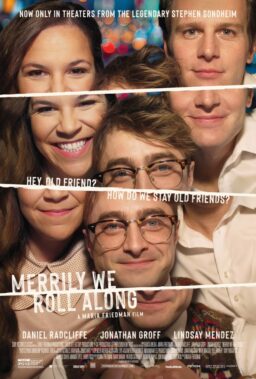HONOLULU — I’ve been away from the Hawaii Film Festival for a few years, and things have changed. Two indications:
1. I went to see the Korean film “Bittersweet Life” and found the street in front of the theater blocked by screaming fans of the star Byung-hun Lee. By the time I’d fought my way to the door, an ambulance had arrived to cart away a fan who had fainted. In the old days, no one screamed or fainted at Hawaii, except at the movies.
2. On a more serious note, I was talking with Christa Marker, the Germany documentarian who is also an official of the Berlin festival, and she said: “This festival has arrived. It is now at the top level.” While that does not rank it with Cannes, Toronto and Berlin, it means that a turning point has been passed.
I remember Sundance and Toronto in their earliest days, when everybody at the festival could fit into one hotel banquet room. Look at them now. Then I look at the enormous crowds at Hawaii, its 200 films, its creative programming, and I think, yes, the dream that Jeannette Paulson had when she started the festival 25 years ago is becoming a reality.
It’s officially called the Louis Vuitton Hawaii International Film Festival, and the sponsorship has made a difference, providing cachet and cash. Its director, Chuck Boller, has things humming along smoothly. The festival now occupies not only the beautifully restored Hawaii Theater, a movie palace from the 1920s, but several big screens at the Regal cineplex at the Dole Cannery (which is not a cannery any longer; you don’t have to sit on pineapple crates to watch the movies).
Major directors are here; the most important is also the most symbolic. Zhang Yimou, one of the leading filmmakers of China, flew in for a “secret” screening of his new film “Riding Alone for Thousands of Miles.” Secret, because the Tokyo festival had the official world premiere four hours earlier. History: Paulson brought Zimou here circa 1980, and it was his first trip to a Western festival.
Another important director is Korea’s Kim Ji-woon, whose “Bittersweet Life” provides the kind of hard-edged action that is making a name for Korea in new markets. Its star, Byung-hun Lee, will no doubt be ported into Hollywood movies before long, joining Chow Yun-Fat, Jackie Chan and Jet Li. I had also seen him in “Three … Extremes,” which opened Friday in Chicago and other U.S. cities, but I wasn’t aware of his superstar status in certain circles.
“Tell me about him,” I asked two ladies in front of me, after he was introduced and approximately 500 teenage girls with digital cameras stormed the stage.
“Oh, he’s the Korean Brad Pitt!” one said.
“He’s bigger than that!” said the other one. “He’s the American Brad Pitt!”
In the movie, Lee shot approximately everyone he met, although I will not give away the ending. The style was a mixture of film noir and Sundance chic.
Hawaii is still a launching pad for early films by younger directors, particularly Asian Americans. I saw two I admired. Georgia Lee’s “Red Doors” tells the story of a troubled Chinese-American family; the father has retired into deep silence and eventually wanders away from the family on a personal spiritual quest.
The mother presides over a 29-year-old professional (Jacqueline Kim), a young medical intern (Elaine Kao) and a teenager (Kathy Shao-Lin) whose idea of letting a boy know she’s interested in him is putting a bomb in his locker. A small bomb, to be sure. When the intern falls in love with an actress, the family life grows even more fraught, since there is some doubt that the mother can handle this information. The film handles this not as sitcom material but with a warm tenderness.
Romance with an outsider is also the theme of Frank Lin’s “American Fusion,” which stars Sylvia Chang as a divorced woman in her 40s who falls in love with a Mexican-American dentist (Esai Morales). Question: Will her domineering, complaining mother allow her to live her own life? Chang plays a daughter who wants to be loving and dutiful, but is thanked with guilt and criticism. Although the gloom lifts when the dentist supplies a timely blood transfusion, if Morales marries the woman he loves, it will not be in hopes of spending more time with his mother-in-law.
The best movie I’ve seen here is a documentary named “Sisters-in- Law,” which follows several cases through the courts of Cameroon, West Africa. The judges, magistrates and many of the lawyers are women, and they are dealing with women who have been beaten and mistreated. Muslim law suggests such matters be handled within the family, but the movie’s women are strong and determined, and have the law of the land behind them. There is real drama here, but also enough humor to justify the description you often hear, that the movie is like a real-life version of The No. 1 Ladies’ Detective Agency novels.
An American indie that got a lot of buzz is “I Am a Sex Addict” by Caveh Zahedi. The director uses some real people and some actors in a story he says is “entirely true,” about how he destroyed his first two marriages and his peace of mind through an obsessive addiction to prostitutes. Life is strange: He hires an actress to play his first wife, then goes looking on the Web for a prostitute who looks like her, and finds an ad for the porn star Rebecca Lord, who under her real name is already playing the wife.
Zahedi seems less obsessed by prostitutes than he is obsessed by his obsession. He needs to talk about it, “share” with the women in his life, and now even make a film about it. I had the feeling that it was always about him; that he didn’t need prostitutes so much as he needed to need them.
Since he narrates the film in a style combining both the best and the worst of Woody Allen and Nick Broomfield, his saga is perversely interesting, even when it may not be sending precisely the message he intends.












